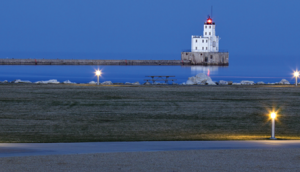Located at one of the gateways to beautiful Door County, WI; sitting quaintly along Lake Michigan; Kewaunee, WI is a not-t00-remote village that is a popular summer destination for boaters and anglers alike. Kewaunee County is also a fertile area for farming. But the economic core of this community of 3,000 had long been the nuclear power plant located just miles outside of town. Local jobs, a steady influx of expense-account supported out-of-town workers to maintain and consult at the facility, and paid property taxes were among the benefits Kewaunee residents enjoyed.
Until 2013, when the plant closed.
“We’re still reeling from the loss of the plant,” says one Kewaunee business owner. “It’s definitely taking a while, and the town is hurting … but we’re getting there.”
Now the village, and indeed the entire county, is struggling to regain economic footing. More than ever, agriculture — not summer recreation — looks to be the driver. And there’s the rub.
In a booming local farm economy, successful waste management is critical. Ground water (see: drinking water), and surface water (see: recreation) contamination is an ever-present concern.

Such is the issue for Kewaunee, and other communities much like it. This article from WisconsinWatch.org, sheds light on the subject and, although nearly two years old, it is as relevant today as it was then.
Bottom line: what promotes a healthy farming economy can sometimes collide with what promotes a healthy community.
Still, for Kewaunee, agriculture is a key to the area’s renewal. Livelihoods increasingly depend on it. Responsibility for bringing the local economy back to stable rests with everyone.
The science and best-practices are there to foster a happy existence between big agriculture and small communities. It is all possible without the uncomfortable restraints of additional government regulation.
Cooperation by aligning agribusiness and community wellness interests to keep water clean is the key.


